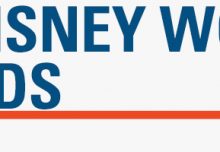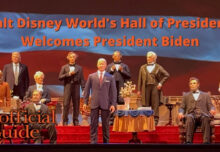Len Testa, coauthor of The Unofficial Guide to Walt Disney World and creator of Touring Plans, tells us about his very first visit to Walt Disney World and what led to a lifelong love for the theme parks.
Currently, all theme parks, cruise lines, and other attractions are closed due to the COVID-19 pandemic. We at The Unofficial Guides hope all our readers and their loved ones, as well as all attraction employees, remain healthy and safe. Without intending to trivialize the current crisis, we will continue to post positive stories about the parks, in hopes of bringing their magic into your home as a welcome distraction during these trying times. For the latest updates, read our guide to cornoavirus and the theme parks.
I fell in love with Walt Disney World because of the lights in line for Pirates of the Caribbean.
It was 1974 and my grandparents had just retired and moved to Florida. They’d decided to take my twin sister, Linda, and me to Disney’s new theme park. While in line at Pirates, I noticed that the electric lights had been designed to flicker as if they were candles. It blew my 6-year old mind that someone had thought of that detail, and that they considered it important enough to make it happen. I was in awe.

My family moved to South Florida in 1980. Money was tight, but admission was cheap enough that we could visit World every couple of years, including a visit to EPCOT Center soon after it opened. The two things I remember from that trip are (1) being surprised that the cast members (CMs) in World Showcase’s France pavilion were from France and spoke French and (2) the joy that my dad got from treating us to lunch at L’ Originale Alfredo di Roma Ristorante in Italy.
Our family moved to North Carolina in 1988, and my sister and I worked our ways through college. We still loved Walt Disney World, and the two of us would regularly leave work at 5 o’clock on Friday, make the 11-hour drive to Walt Disney World, play in the parks until noon Sunday, and then drive home in time for school on Monday morning. Another of my favorite Walt Disney World memories is of the Wilderness Lodge Cast Member who let us, exhausted and giddy, check into our room at 4 a.m. instead of 3 p.m. By the time I finished my undergrad degree, I had visited Walt Disney World more than 20 times.
The first Unofficial Guide to Walt Disney World I ever bought was the 1995 edition. My brother, sisters, and I would read it in between trips and debate the merits of the advice and reader comments. It was a way for us to stay connected to the place we loved, in the days before the internet was ubiquitous.
The Guide was a marvel to me. I was amazed at the use of reader surveys to show which restaurants and hotels were worth your time and money. Also, my undergrad degree was in computer science, so Bob Sehlinger’s math-and-science approach to avoiding lines was eye-opening. It was on a summer trip to Disney’s Hollywood Studios where I first realized the connection between the computer science I’d studied and minimizing your waits in line.

On that fateful day, my sister and I were in a 2-hour line for The Great Movie Ride. It was summer, so it was hot. And we were outside because the line was too long to fit inside the building. As I’m writing this, I can still feel the sun burning the back of my neck—and smell the sweat that drenched all of us in line. I decided right then that there had to be a better way to visit the parks.
A few weeks later I started on my Masters degree at North Carolina A&T State University, in computer science. I went to my advisors, Al Esterline and Gerry Dozier, and said that I wanted to write my thesis on how to minimize waits in line at Disney World.
It’s probably unorthodox for a beginning grad student to propose their own thesis—Al and Gerry had their own projects they could’ve put me on, and I probably would’ve had a choice. To their credit, they didn’t immediately say no. Instead, they asked me to answer two questions:
- Is the problem hard enough to be worthy of a Masters thesis?
- Does anyone besides you care about solving this problem?
It turns out that minimizing your wait in line at theme parks is an example of one of the most famous problems in math and computer science—this thing called The Traveling Salesman Problem. And because the time you wait in line at a ride varies based on the time of day you visit, it’s an even harder version of the problem, with its own name—the Time-Dependent Traveling Salesman problem. And as to whether anyone besides me cared about the problem, I knew that tens of millions of people visited Walt Disney World every year, and it was probably important to them!
My thesis topic got approved that fall. One of the first things I did was to write a letter to Bob Sehlinger, explaining what I was going to do for my thesis, and asking for any data he had about wait times at the rides. I’m pretty sure Bob called me the day he got my letter. And from the very beginning, Bob was fabulous—he shared everything he’d learned about optimization, and all of the feedback he’d gotten from readers about what they wanted to see in a touring plan (for example, wanting not to criss-cross the park).
Bob wasn’t the exception—the great thing about writing a thesis on avoiding lines in Walt Disney World is that people intuitively understand why it’s important. I ended up having to contact dozens of experts in academia and industry, to ask them (probably too many) questions about their research and how to translate it to my problem. And every one of them, without exception, gave me as much of their time as I needed. I really think they did that because they also love the parks.
I finished my Masters thesis in 2000. The thesis’ major theoretical contributions (if anyone is interested) were a set of improvements to the Malandraki-Dial restricted dynamic programming heuristic to solve very large problem instances; an evolutionary algorithm that mimics the process of natural selection to optimize touring plans; and how to address constraints like time windows (such as having a lunch reservation at noon) and precedence (such as having to obtain a FastPass before you can use it) in time-dependent problems using evolutionary algorithms.
True story: As I was walking into the room to do my thesis defense, the university had me sign the patent application for my research. I turned to Al Esterline, my advisor, and said, “You know, I could just sing and dance here for the next hour, and now you have to pass me.” And he said “Yes, but do a good job anyway.”
In grad school I’d also written the first version of our touring plan software, to test the ideas in my thesis. After grad school, it was time to turn the academic software into a commercial product. That took two more years, and dozens of additional trips to Walt Disney World, before it was ready
to test.
By now I was talking to Bob Sehlinger on a regular basis. The main problem we had to solve during that time was getting enough data about lines in the park: in order to model the line for Space Mountain, for example, we had to know how the line grew and shrank throughout the day.
I enlisted my family to help collect this data. We’d split a park like the Magic Kingdom into two halves: east and west. Every 30 minutes, the person on the east side would write down the posted wait time at Buzz Lightyear in Tomorrowland, then start a walking loop that took them to the other attractions in Tomorrowland, then to Toontown, then the east side of Fantasyland, finishing up at Dumbo, which was then in the center of Fantasyland. The person on the west side would do the same thing, for Adventureland, Frontierland, Liberty Square, and the other half of Fantasyland. If you walked fast enough, you had enough time for one ride on the Tomorrowland Transit Authority before your next loop began. We did this from park open to park close, and we averaged around 25 miles of walking per day.
We tested the software’s touring plans against the ones that were already in the Unofficial Guide by recruiting families to test them, side by side, in the parks. At that time, the Guide’s touring plans were based on a mixed integer linear programming algorithm that Bob had developed, possibly with help from some folks at M.I.T.

It took two years of collecting data and improving the software—until 2003—before the software’s touring plans beat the Guide’s existing plans. Even then, the software couldn’t beat the existing plans for the Animal Kingdom, probably because there weren’t enough attractions to make the problem large enough. It wasn’t until Expedition Everest opened in 2006 that the software’s plans replaced those in the book.
Today Touring Plans is the research arm of The Unofficial Guides, which continue to appear in print every year with the best touring plans out there.
If you enjoyed this post, please subscribe to our YouTube channel and sign up for our newsletter here. Be sure to follow us on Twitter, Facebook, Instagram, and YouTube.




